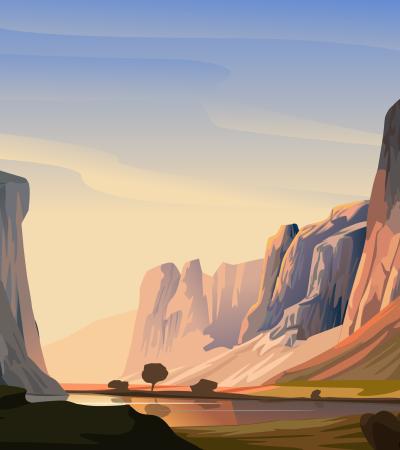This was a four-week course in which we created our own custom barn quilts, learned a little about their history, and had a wonderful time bringing people together and beautifying the town. We are now on the local barn quilt trail and will be doing another class soon.
Advanced Planning
We wanted people to learn about the history of barn quilts (and maybe look at our quilting books and barn quilt books). We also wanted to provide an activity to let people socialize in the library. And finally, by displaying these around town, we wanted to create a draw to our community.
We started by picking out several barn quilt patterns and printing them (in color) for patrons to use. I recommend that you go to your local hardware store — pick one that will cut boards for you — and buy 3/4-inch plywood. Have it cut into 2-foot-by-2-foot squares (you will get eight from each sheet). If you go any larger you will have trouble fitting them around a table; any smaller, they are too small to display. Pick up X-Acto knives, green painters tape, pencils and erasers — lots of erasers. Be sure to have yard sticks on hand as well.
Marketing
We promoted the event on Facebook, in our newsletters, and via word of mouth. Classes at both libraries I work for filled up (one is currently ongoing), and we are planning another class in the fall.
Budgeting
Like many of our programs, this one is very affordable. We spent less than $25 on wood (limiting our class to 15 participants, and one extra board for the instructor to use to demo) and a gallon of primer, another $20 on green painters tape, and the dollar store had X-Acto-type knives and erasers for another $5.
We asked participants to bring their own outdoor paints. We told them that we didn't know what colors they would like, and it would have been very costly for us. Small sample cans will work just fine for this project; these cost about $3.50 per can with an average of three colors used per quilt.
We also provided paintbrushes, but we already had those.
Day-of-event Activity
Cover your area with newspapers or plastic because there will be paint spillage. We had two staff members help because our group was quite large during the event. Be sure to have hairdryers or fans ready to dry the paint more quickly.
Program Execution
Week 1: Everyone was introduced to the idea of barn quilts and reminded that these will not last forever. We then primed our 2-by-2 squares (making sure to prime the sanded side), and then each person picked a pattern they wanted to create. We put two coats of primer on each board, including the edges. This was easier if we elevated the boards slightly on a discarded book or can or cup.
Week 2: We drew out the patterns, labeled each section with the color we wanted to paint it (so it became a paint-by-letter), and began taping and painting our first colors. (Note: Only use pencil since it is easy to paint over.)
Week 3: Untape the first color and move on to your next colors. You may be done at this point, as some participants were. Others took up to five weeks to complete all of their colors. If people have a hard time getting their colors to meet up, suggest using a paint marker to outline each section and hide the edges.
Advice
Be sure to know how to do measurements and basic math to figure out your grid patterns. Keep calculators on hand.
If you use outdoor primer and it happens to be oil based, do it in a room with very high ceilings/open windows and keep a fan on it!
Supporting Materials
- Feedback (Coming Soon!)
- Programming Librarian Facebook Group



